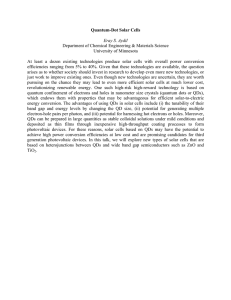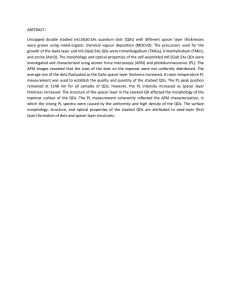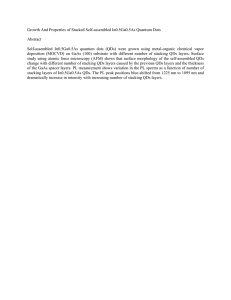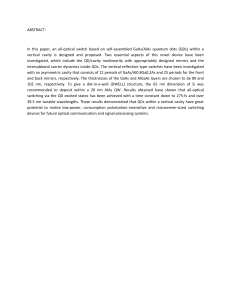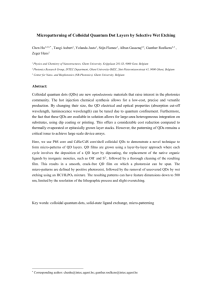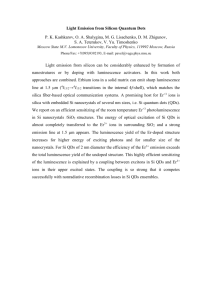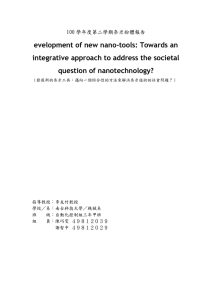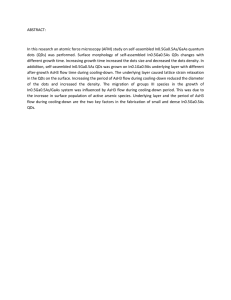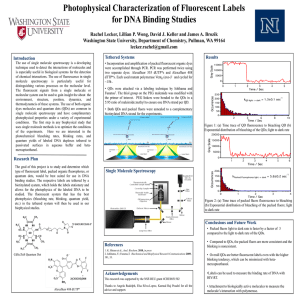ABSTRACT
advertisement
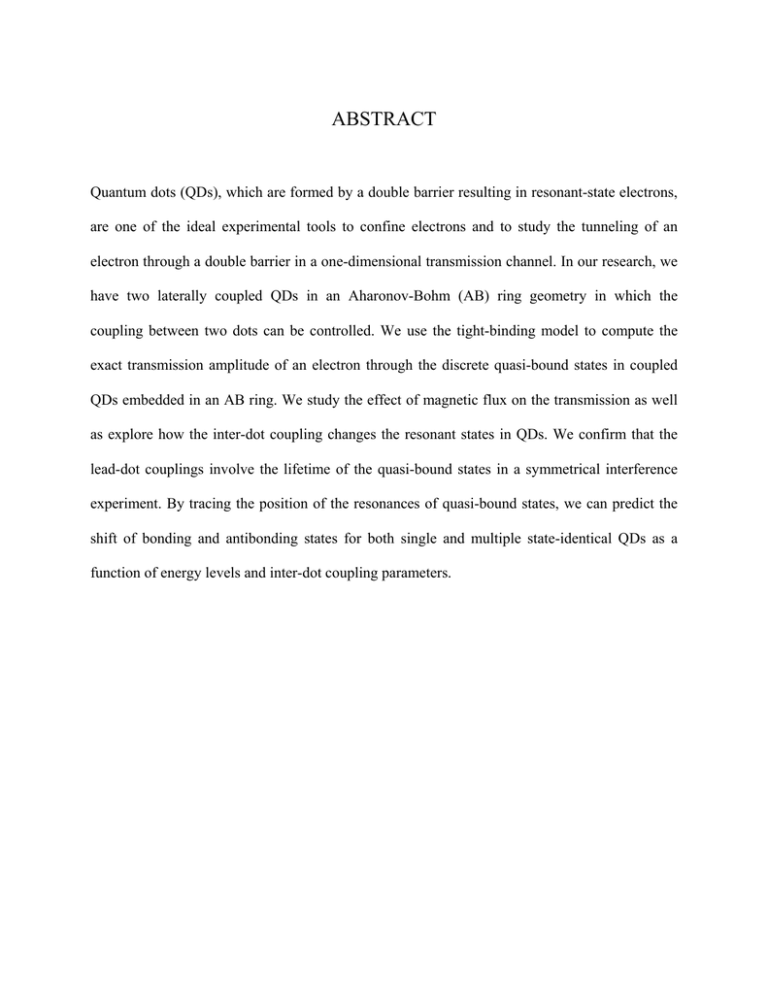
ABSTRACT Quantum dots (QDs), which are formed by a double barrier resulting in resonant-state electrons, are one of the ideal experimental tools to confine electrons and to study the tunneling of an electron through a double barrier in a one-dimensional transmission channel. In our research, we have two laterally coupled QDs in an Aharonov-Bohm (AB) ring geometry in which the coupling between two dots can be controlled. We use the tight-binding model to compute the exact transmission amplitude of an electron through the discrete quasi-bound states in coupled QDs embedded in an AB ring. We study the effect of magnetic flux on the transmission as well as explore how the inter-dot coupling changes the resonant states in QDs. We confirm that the lead-dot couplings involve the lifetime of the quasi-bound states in a symmetrical interference experiment. By tracing the position of the resonances of quasi-bound states, we can predict the shift of bonding and antibonding states for both single and multiple state-identical QDs as a function of energy levels and inter-dot coupling parameters.

